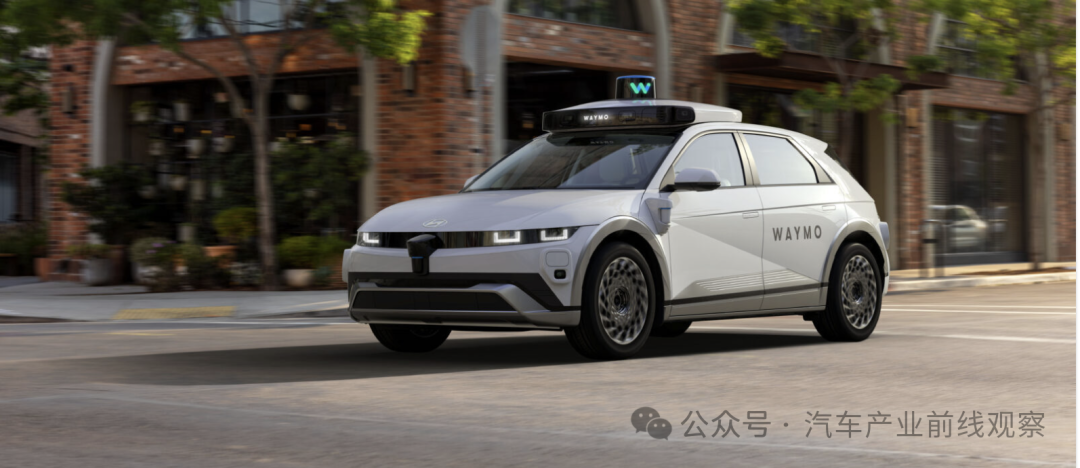
We have recently published several articles highlighting some issues surrounding the concept of the robot taxi revolution. However, robot taxis do have some advantages, one of which is particularly noteworthy.
A reader shared this research with us in the comments section. In fact, we reported on this research when it was published, but I really forgot about it until this reader brought it up again. The core point of the research is that robot taxis are safer. Well, at least Waymo’s robot taxis are.
Here is a statement from Waymo when they announced the results of this research conducted by a well-known third-party organization: “Today, we share our latest cutting-edge research with Swiss Re, one of the world’s leading reinsurance companies, which analyzes the liability claims related to collisions that occurred during Waymo’s autonomous driving over 25.3 million miles.
This research uses aggregated statistics of auto liability claims to represent fault-related collision incidents and expands upon our previous studies. The research shows that as we scale our operations in cities like Phoenix, San Francisco, Los Angeles, and Austin, Waymo’s autonomous driving system (Waymo Driver) significantly outperforms the general population of drivers, as well as the latest generation of human-driven cars equipped with advanced driver assistance systems (ADAS).”
In other words, Waymo’s robot taxis are much less likely to be involved in accidents compared to other vehicles. Over the past week, I feel like I’ve seen an accident here every day, including one very serious incident. If we had more Waymo robot taxis around, I would definitely feel safer.

Here is more from Waymo regarding the above research results: “This study compares Waymo’s liability claims with baseline data from human drivers, based on over 500,000 claims and more than 200 billion miles of driving data from Swiss Re. The study found that compared to human-driven cars, Waymo’s autonomous driving system demonstrates better safety performance, with property damage claims reduced by 88% and personal injury claims reduced by 92%. Specifically, during the 25.3 million miles of driving, Waymo’s autonomous driving system was involved in only 9 property damage claims and 2 personal injury claims. These two personal injury claims are still being processed, and the paper describes them. For the same distance, human drivers are expected to have 78 property damage claims and 26 personal injury claims.”
“Notably, even compared to newer models equipped with modern safety technologies (2018 to 2021 models), Waymo’s autonomous driving system’s safety advantage remains significant. These modern safety technologies include automatic emergency braking, forward collision warning, lane-keeping assistance, and blind-spot monitoring, among other advanced driver assistance systems (ADAS). Compared to this group of vehicles, Waymo’s autonomous driving system reduced property damage claims by 86% and personal injury claims by 90%.”
With property damage claims reduced by 88% and personal injury claims reduced by 92%—this is no small matter. Although robot taxis still face other issues (such as potentially increasing traffic congestion), it is hard not to feel that we should strongly promote robot taxis when seeing these data. However…
Perhaps in the coming years, what we will see is not an exponential increase in the number of robot taxis, but rather Waymo’s autonomous driving technology entering the consumer automotive market. By then, people can activate Waymo’s autonomous driving system while commuting to work, picking up kids, shopping, etc., and then sleep, eat, watch videos, play games, or just enjoy the scenery along the way. I look forward to such an experience! Of course, people once hoped that Tesla’s Full Self-Driving (FSD) technology would one day achieve the same functionality, but having owned FSD (for almost 6 years now), I personally have far less confidence in FSD achieving this capability compared to my confidence in Waymo’s technology continuing to lead the market.
Waymo’s Chief Safety Officer Mauricio Peña stated: “Traditionally used auto insurance claims data for assessing human driver liability and risk is a powerful tool for evaluating the safety performance of autonomous vehicles. This is a truly groundbreaking study that not only validates Waymo’s excellent safety record but also provides a scalable framework for continuously assessing the impact of autonomous vehicles on road safety.” Indeed.